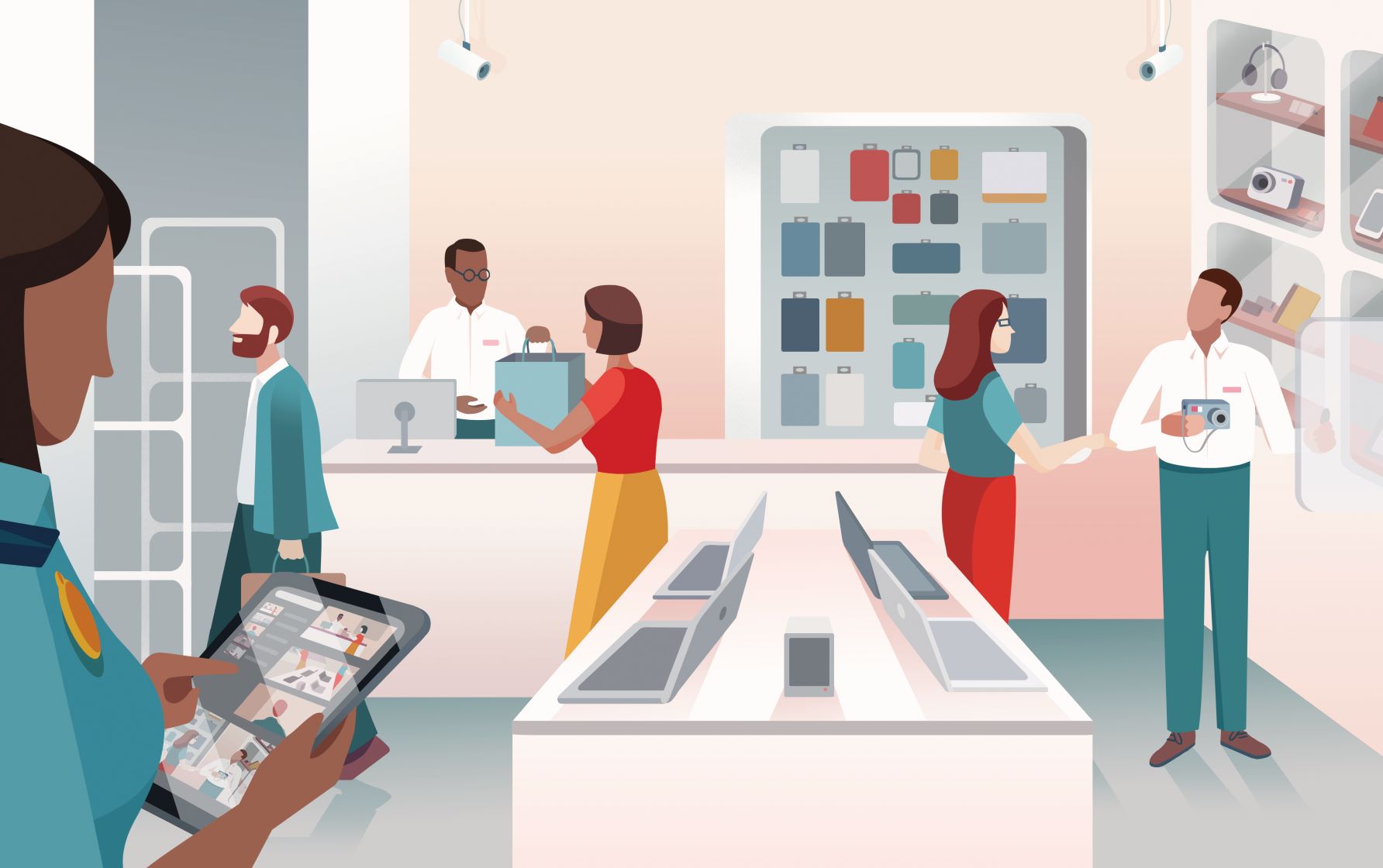Why large-scale retailers are moving video to the cloud
Read our latest conversation with Rob Borsch, Application Group Leader for Retail and Banking at Genetec, about the benefits of securing retail stores with a cloud-based video surveillance solution.
 Q&A with Rob Borsch, Application Group Leader for Retail and Banking at Genetec
Q&A with Rob Borsch, Application Group Leader for Retail and Banking at Genetec
Today’s retail giants can have hundreds of stores across the country and around the world. While many have coordinated other business functions throughout their entire organization, for some, security has lagged behind.
We still see retail organizations running individual physical security systems that are being monitored by a single security operator in a backroom. This setup makes it hard to standardize operations and difficult to extract meaningful data.
To address these challenges, many in the industry are adopting cloud-based video management system (VMS) solutions.
What are the common security challenges facing retailers today?
Retail—particularly brick and mortar retail—is a tough business right now. Online shopping has caused major disruption and is putting pressure on everyone’s ability to be profitable. To combat this, we’re seeing an increase in the number of retailers moving toward frictionless shopping, which presents new challenges in terms of store monitoring and loss prevention.
At the same time, budgets are being cut every year in an effort to stay competitive. This has caused retailers to think differently about their business strategies.
How are retailers addressing the challenges associated with shrinking budgets?
When it comes to security operations, retailers are trying to do more with less. One way to do this is through centralizing security operations by deploying a unified platform like Genetec™ Security Center. This reduces the expense associated with having dedicated personnel in each store without compromising on security or loss prevention.
What this means in practical terms is fewer personnel monitoring security for hundreds of stores. Instead of having someone in every store sitting in their office watching video from surveillance cameras, a unified platform allows retailers to centralize security across all stores in hubs, security operations centers, or investigation centers.
With centralized locations for monitoring, reporting, investigating, and granting access, fewer security personnel are required to watch all activity at multiple stores. In this way, centralizing operations acts as a force multiplier.
Why are retailers migrating to a cloud-based VMS?
Retailers are now looking to save money. One way to achieve this is to reduce the infrastructure kept in each store. By migrating to a cloud-based VMS that records video directly to the cloud, retailers eliminate the need to keep recording hardware on-site. On-premises hardware can be costly to maintain, update, and replace.
But retailers need to be mindful that not all solutions are the same. Some hybrid-cloud or cloud-managed solutions don’t eliminate hardware costs since these systems still store video on premises—either in the cameras themselves or on a server bridge—before sending it to the cloud.
When deploying a true cloud solution, video captured in-store is recorded directly to the cloud and then federated to an operations center. This has the desired effect of eliminating all costs associated with on-premises hardware.

What are key considerations when migrating to a cloud-based VMS?
Infrastructure
Reducing hardware is one of the main drivers in the decision to move to the cloud. First, it eliminates the upfront costs associated with purchasing and installing physical infrastructure in all stores.
Additionally, migrating to the cloud reduces the long-term costs of having to maintain and update that infrastructure. This can include the labor and logistics of sending personnel to maintain, fix, and replace servers. And, even when servers are in good working condition, they still require personnel to ensure that systems are up to date and compliant with IT requirements and other regulations.
With a cloud-based VMS, retailers not only eliminate the hardware kept on-site and all associated costs, but they also save money by delegating software updates and maintenance responsibilities to the vendor.
Space
Retail also has the added pressure of space. Every square foot taken up with servers or other equipment in a store reduces the amount of space that can be used for displaying or storing merchandise.
This can have a negative impact on how much or how well they can sell products. Moving to the cloud means that, without on-premises hardware, retailers can optimize that extra space to enhance profitability.
Inventory
Some retailers also keep servers on inventory to ensure that they always have backup equipment available in case of malfunction. However, this requires that they store multiple—sometimes hundreds—of servers in warehouses.
The cost of purchasing and storing backup servers can be significant. By deploying a true cloud-based VMS, retailers eliminate inventory costs since video is sent directly to the cloud.
Agility
In addition to reducing costs, moving to the cloud also increases a retailer’s agility when it comes to setting up new stores, or tearing down existing ones. By eliminating hardware and inventory requirements, a cloud-based VMS makes it easy to deploy a new store location. When you no longer need on-premises hardware, installing or removing local infrastructure is relatively painless.
Resources
As physical security systems moved to IP-based technology, much of the associated maintenance tasks have fallen to IT departments. Increasingly, they have been responsible for performing hardware maintenance and software updates for secondary, supporting systems.
IT departments are now looking for ways to reassign personnel to work on primary systems in their stores. By moving video surveillance to the cloud, retailers can shift the support functions related to maintaining the VMS to vendors and free up IT personnel to focus on core business needs.
What are key factors for evaluating different cloud-based options?
It’s important for retailers to select a flexible cloud-based VMS that will continue to evolve alongside their business. When moving to the cloud, retailers need a solution that will work for them today as well as in six months, one year, and five years from now.
And it’s also important to remember that moving to the cloud is as much about finding the right vendor as it is about using the right products. Retailers need a partner they can trust and who will effectively maintain and update their cloud-based solution.